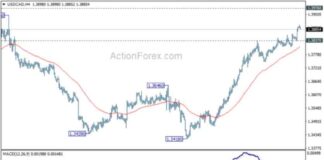In this first part of a series of reports, a new toolkit is introduced to predict the probability of soft-landing, stagflation, and recessionary episodes. Bernanke (2024) reviewed the Bank of England’s forecasting process for monetary policymaking, focusing on the Bank’s forecasting and decision-making during times of significant uncertainty. The importance of accurately identifying and quantifying risks to the economic outlook was emphasized.
The proposed new framework aims to help decision-makers effectively quantify potential risks to the economic outlook by moving away from the traditional approach of solely forecasting recession probability and/or GDP growth rate predictions for the near future. By characterizing the growth outlook into three different regimes – soft-landing, stagflation, and recession – decision-makers can better gauge the appropriate policy stances needed. This approach helps in identifying the next economic phase and prepares for the potential outcomes.
The recent monetary policy path has deviated from both the recession and soft-landing projections of 2023, highlighting the need to consider a broader range of economic scenarios when making policy decisions. The toolkit assists analysts in identifying whether a soft-landing, stagflation, or recession is on the horizon. By understanding the possibilities, decision-makers can better prepare for the economic landscape ahead.
Looking at historical episodes of soft-landings, stagflation, and recessions will be crucial in the next installment of this series. By quantifying past scenarios, analysts can gain insights into how different economic conditions have unfolded and the corresponding policy responses.
It is evident that predicting recessions alone is not enough to make informed policy decisions. While forecasting recession probabilities has its benefits, it is essential to consider a wider range of economic scenarios to accurately predict the future path of the economy. By estimating the probabilities of each scenario, decision-makers can have a more comprehensive view of the potential risks and adjust policies accordingly.
The recent divergence between private sector forecasters’ recession predictions and the FOMC’s soft-landing projections in 2023 underscores the importance of a nuanced approach to economic forecasting. While different forecasts may suggest varying policy paths, it is crucial to consider all possible outcomes and tailor policies accordingly.
As the upcoming easing cycle unfolds, historians may find themselves repeating certain patterns. By quantifying the economic outlook into different scenarios, decision-makers can better navigate the uncertainties ahead. Rather than relying on traditional models, it is essential to consider a range of possibilities to ensure effective policy responses. Stay tuned for more insights into historical economic episodes and their implications for the future.

















